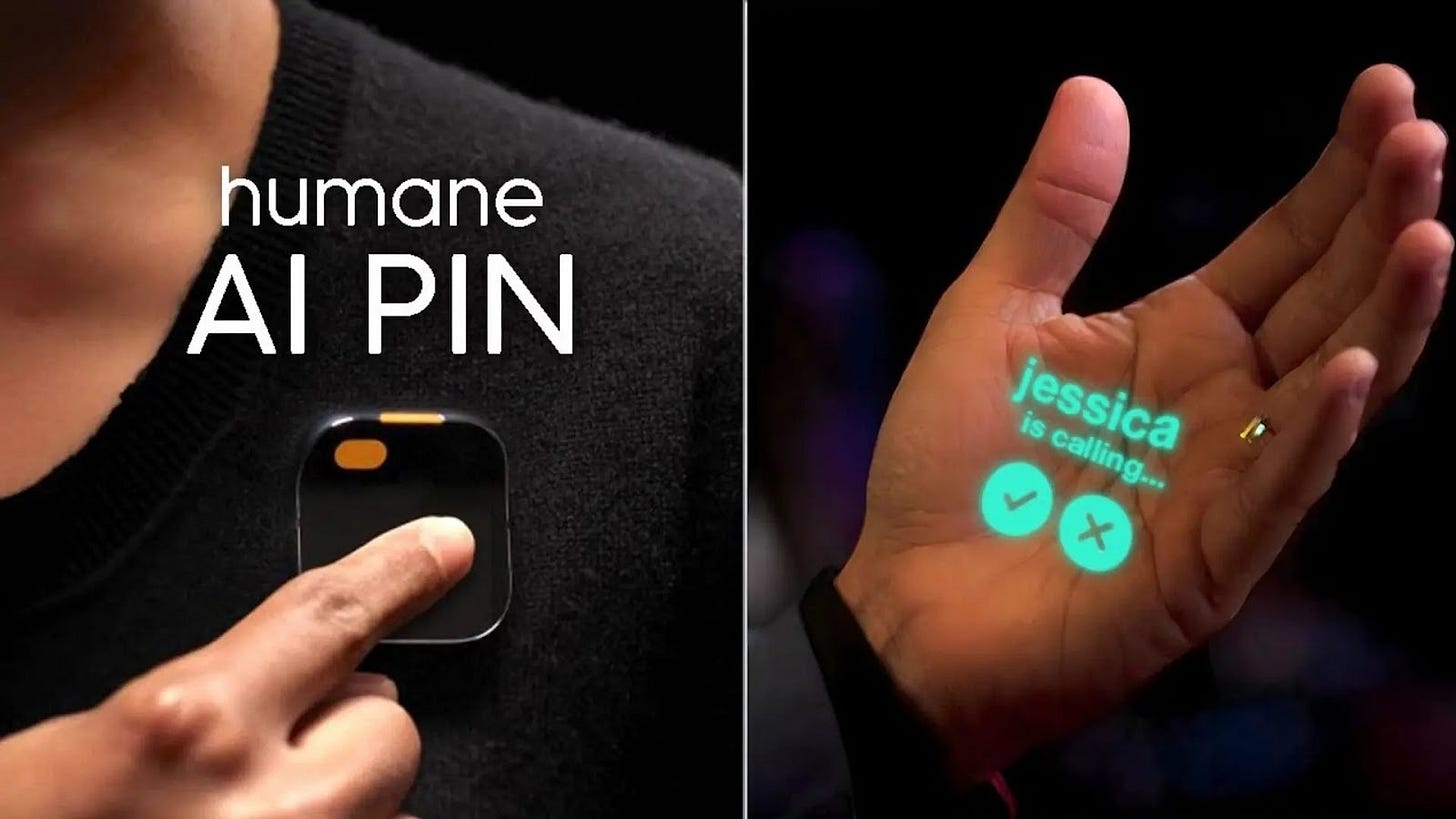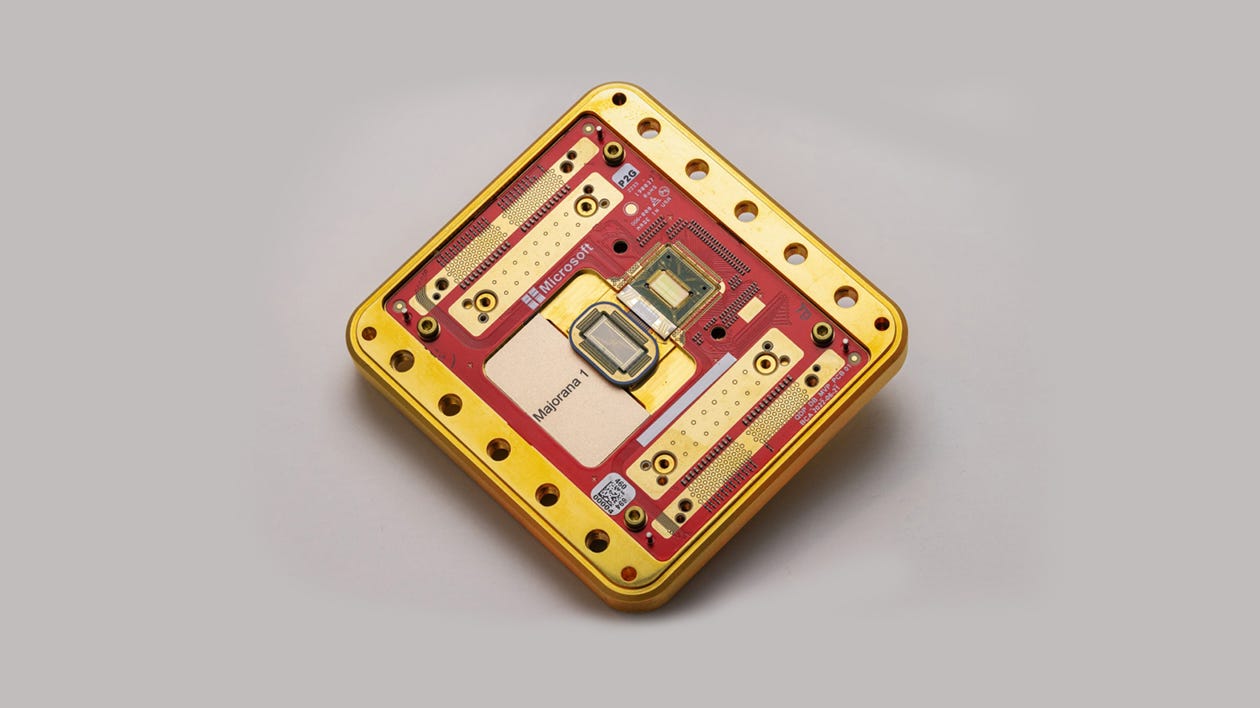(#114) 🚗 BYD’s strategy is bad news for automakers; 🍏 Apple’s main reason to launch iPhone 16e
Why Foxconn can now build EVs and take a stake in Nissan?
Dear #onStrategy reader,
here is what you’ll find in this edition:
BYD’s strategy is bad news for automakers
Humane’s AI Pin rise and fall
Meta’s robotics bet: learning from Reality Labs and the long road to hardware
Why Foxconn can now build EVs and take a stake in Nissan?
Apple’s main reason to launch iPhone 16e
Microsoft achieved quantum computing
On to the update:
BYD’s strategy is bad news for automakers
1/ For years, Tesla and other automakers have operated under the assumption that cars would be commoditized hardware, while software (specifically driver assistance and self-driving features) would be the high-margin differentiator. Tesla’s $8,000 “Full Self-Driving” package and subscription models were designed to turn vehicles into long-term software revenue streams, much like how Apple monetizes iPhones through services. Other manufacturers, including Mercedes-Benz and GM, followed suit, expecting AI-powered features to become a lucrative, recurring revenue source.
2/ BYD just shattered that assumption. By making advanced driver assistance systems (ADAS) standard across its lineup, even on a $9,500 Seagull EV, BYD is forcing the industry’s hand. The move turns what Tesla and others hoped to be a premium add-on into a baseline expectation, much like seatbelts and airbags. If competitors are pressured to match BYD’s pricing strategy, the industry’s vision of high-margin software profits may never materialize. BYD isn’t just selling more cars, it’s redefining what consumers expect from them, making it nearly impossible for rivals to charge extra for software that customers will soon demand as a given. LINK
Humane’s AI Pin rise and fall
Why did it fail? Well, I wrote about this in November 2023:
“Humane, a startup led by former Apple executives, just launched the AI Pin – a wearable device designed to revolutionize our interaction with technology [1]
What’s fascinating? The AI Pin attaches to clothing and integrates sensors, projectors, and AI tech, promising a range of advanced features.
Why I’m skeptical?
While the concept of a frictionless AI experience is alluring, I’m somewhat skeptical. For AI to truly integrate into our daily lives, it needs to perceive the world as we do. It should not only be about effortless interaction; it needs to see what we see, hear what we’re saying, and perhaps even understand our surroundings with similar intuition. [2]
Towards a frictionless world:
This leads me to think – wouldn’t glasses be a more suitable form factor? Glasses sit naturally at the intersection of our vision and hearing, providing an ideal platform for an AI to engage with our environment more holistically.
This isn’t to undermine the potential of the AI Pin. It’s a step towards the future of wearables. But it sparks a conversation: What is the ultimate form of wearable AI? How do we balance innovation with practicality and comfort?
I would love to hear your thoughts on this. Could glasses be the next frontier for wearable AI? Or is there another form factor that could better bridge the gap between technology and human experience?” [1], [2], [3]
So, this was not quite a surprise…
Meta’s robotics bet: learning from Reality Labs and the long road to hardware
Meta’s move into AI-powered humanoid robots isn’t a random experiment, it’s a strategic necessity. After years of pouring billions into Reality Labs with little financial payoff (with > $50 bn losses), Meta is shifting gears. Why? Because the real game isn’t just virtual reality; it’s the fusion of intelligence, embodiment, and automation.
1/ Why is Meta doing this?
Meta needs a hardware win. The metaverse hasn’t delivered, AR glasses are still a niche, and Apple’s Vision Pro reminds everyone how far ahead the competition is in premium hardware. AI, however, is where the money and momentum are. By building humanoid robots powered by its Llama AI models, Meta is positioning itself for the next great computing shift: embodied AI that can interact with the physical world.
2/ Reality Labs was Zuckerberg’s moonshot, an attempt to own the next computing platform. But the problem? The economics never matched the vision. Billions were burned, headsets remained niche, and mainstream adoption stalled. Now, Meta is trying a different path: instead of just building the world inside a headset, it’s bringing AI into the real world through robotics.
The robotics pivot follows a familiar playbook: start with software (Llama AI models), integrate with existing consumer hardware (smart glasses), and then scale into a full-fledged hardware ecosystem. The logic? Small wins first, massive bets later.
3/ From glasses to robots (a hardware playbook)
Meta’s AI-powered Ray-Ban smart glasses are step one. They put AI in a consumer product that people actually wear and use daily. The next step? AI in more tangible, assistive roles: robots designed for household tasks, logistics, and eventually, broader automation.
This is the long game: build AI first, embed it in small consumer products, then scale up to robotics. Just like Apple went from iPods to iPhones to Vision Pro, Meta is moving from AI chatbots to AI-powered wearables to AI-driven robots.
4/ The real test
For this to work, Meta needs to solve the economics of robotics, where every other player has struggled. The challenge isn’t just building humanoid robots, it’s making them affordable, useful, and indispensable.
If Meta gets this right, it won’t just own a new product category, it will define a new AI-powered reality. If it fails? It’s Reality Labs all over again, just with bigger robots. LINK
Why Foxconn can now build EVs and take a stake in Nissan?
There are at least 5 reasons for pursuing this strategy:
1/ Escaping the low-margin trap
Foxconn’s core business (ie. contract manufacturing consumer electronics) is a relentless, low-margin game. The shift into EVs is a strategic necessity. Apple’s iPhone supply chain won’t sustain growth forever, and as I often note, contract manufacturers are at the mercy of their largest customers. By entering EVs, Foxconn is diversifying into a market where manufacturing expertise still has leverage, and where the commoditization cycle hasn’t fully played out.
2/ The Tesla Playbook: Vertical integration meets mass production
Tesla disrupted the auto industry by approaching car manufacturing more like consumer electronics—software-driven, supply chain optimized, and vertically integrated. Foxconn is flipping the script. It already dominates high-scale, just-in-time electronics production. Now, by acquiring a stake in Nissan, it gains legacy automotive expertise and market credibility, which will be essential for scaling up its EV ambitions.
3/ Nissan’s desperation = Foxconn’s opportunity
Nissan, reeling from failed merger talks with Honda, is struggling for relevance in a rapidly shifting EV landscape. Foxconn needs auto industry know-how, and Nissan needs a lifeline. This partnership isn’t just about manufacturing, it’s about survival. Nissan brings distribution, regulatory expertise, and an established brand. Foxconn brings cost efficiency, supply chain mastery, and the ability to move faster than traditional automakers.
4/ Geopolitical hedge against tariffs
With looming U.S. tariffs on imports from Mexico and Canada, Foxconn is seeking ways to localize production and mitigate trade risks. Expanding into EVs, especially through a partnership with Nissan, gives it an opportunity to establish production in regions that are less vulnerable to sudden policy shifts. This echoes my point that manufacturing, in a deglobalizing world, is becoming more about local hubs rather than a fully globalized supply chain.
5/ AI & software-defined vehicles: the real endgame
Foxconn’s real competitive edge isn’t in building traditional cars, it’s in leveraging its expertise in AI servers, cloud, and networking. As cars become software-defined, the winners won’t just be legacy automakers but companies that understand chips, connectivity, and AI integration. Foxconn’s pivot mirrors Apple’s long-rumored EV ambitions: ie. own the interface, own the supply chain, and turn the vehicle into the next platform.
In conclusion, Fonxconn is playing a high-stakes game. If it executes well, it could become the “TSMC of EVs”, the dominant contract manufacturer for the next generation of vehicles. But if it underestimates the capital intensity and slow-moving nature of the auto industry, this could be a value-destructive detour. Either way, this is the boldest move Foxconn has made since it became Apple’s manufacturing backbone. LINK
Apple’s main reason to launch iPhone 16e
Beyond a new entry phone, there is a long game here: total vertical integration.
Here are some reasons why Apple is moving in this direction:
1/ Cutting dependency on Qualcomm
Apple has been reliant on Qualcomm for 5G modems, a relationship marked by legal battles. By bringing modem development in-house, Apple is doing what it does best: ie. vertically integrating key technologies to control its own destiny. Just like it did with Intel by replacing Mac processors with Apple Silicon, Apple is positioning itself to phase out Qualcomm and remove a critical supply chain dependency.
2/ Custom silicon = Better efficiency & performance
Apple’s success with M-series chips and A-series processors has proven that tight integration leads to better power efficiency and performance. An Apple-designed modem could dramatically improve battery life, signal strength, and thermal efficiency, all these being key pain points in mobile networks. Expect Apple to leverage its silicon expertise to optimize connectivity just like it did with CPU and GPU design.
3/ Strategic cost control & Supply chain leverage
Modems are one of the most expensive components in a smartphone. By designing its own, Apple reduces component costs and gains pricing leverage over suppliers. This is classic Apple strategy: ie. drive down external reliance while increasing control over margins. Over time, this will make iPhones cheaper to produce, even as Apple maintains its premium pricing.
4/ The long play: modems beyond the iPhone
A 5G modem isn’t just for phones. Apple’s in-house development opens the door for modem integration across all Apple devices (iPads, Macs, and even future AR/VR wearables). Imagine an M-series Mac with native 5G support, eliminating the need for Wi-Fi tethering. Apple’s goal isn’t just to make a modem, it’s to create an ecosystem-wide connectivity advantage.
Let’s see how Apple’s modem works in real life and if this transition will continue to iPhone 17 and other devices. LINK
Microsoft achieved quantum computing
1/ Quantum computing is a revolutionary technology that leverages qubits instead of traditional bits, allowing for vastly more complex calculations by exploiting quantum superposition and entanglement. Unlike classical computers, which process information in binary (0s and 1s), quantum computers can perform exponentially more calculations simultaneously, making them ideal for solving problems in cryptography, materials science, and artificial intelligence. However, achieving a scalable and error-free quantum system has remained a major challenge due to qubit instability and noise.
2/ Microsoft’s breakthrough with the Majorana 1 processor marks a significant step toward overcoming these limitations. The company has developed the world’s first topoconductor, a new material that enables more stable and scalable quantum computing by controlling Majorana particles—a theoretical concept first proposed in 1937. This approach allows for the creation of more reliable qubits, potentially fitting one million qubits on a single chip, which is a game-changer compared to previous architectures that required massive physical infrastructure to house just a few hundred qubits.
3/ This breakthrough isn’t just theoretical; Microsoft has been selected by DARPA to advance to the final phase of its utility-scale quantum computing program, meaning real-world applications are within reach in years, not decades. If successful, Microsoft’s Majorana-based quantum computers could unlock unprecedented computing power, enabling breakthroughs in drug discovery, climate modeling, and advanced AI systems. While the road ahead still requires scaling this technology, Microsoft’s innovation signals that quantum computing is transitioning from an experimental concept to an impending industrial reality. Nature paper, Microsoft
I just launched my book on strategy:
Through 28 chapters I covered three parts: (1) Strategy, (2) Innovation & Growth, and (3) Generative AI.
See a full sample - the chapter on Network Effects. - click HERE
But the E-Book: https://book.onstrategy.eu
Buy a hardcopy on EMAG
Buy it for Kindle on Amazon










